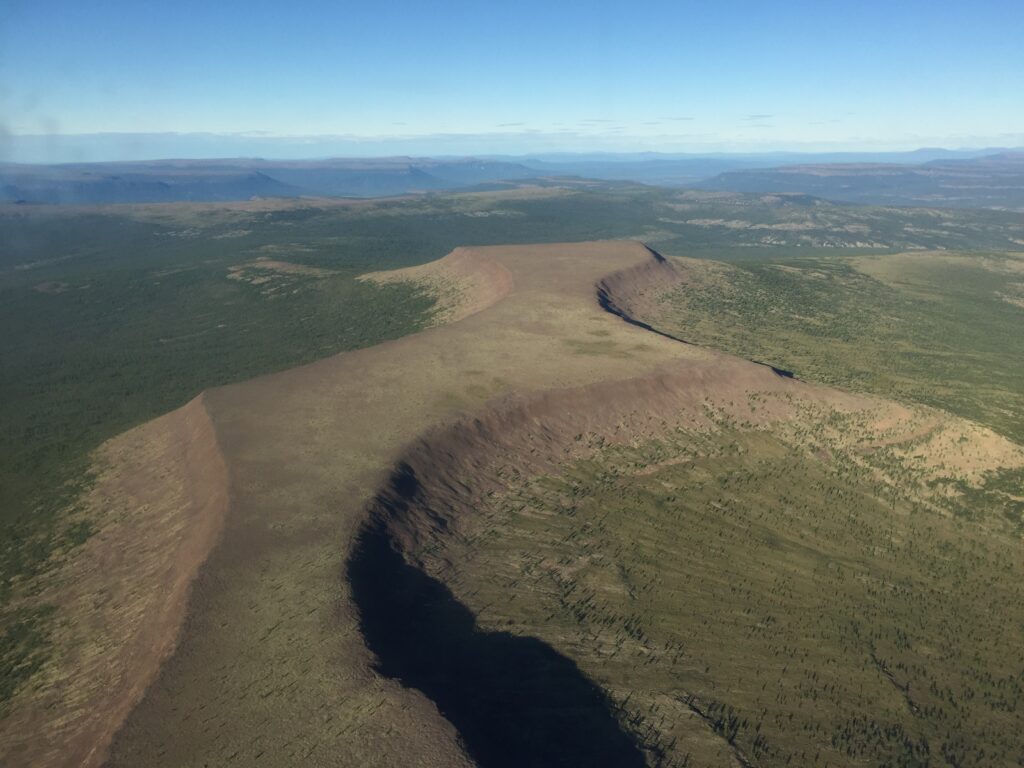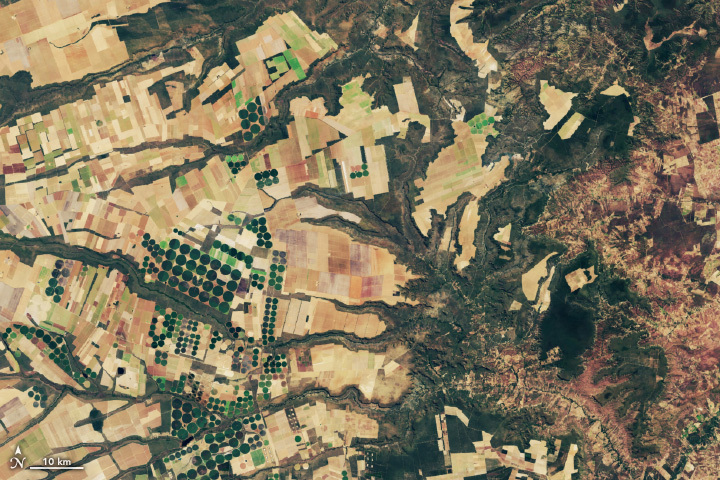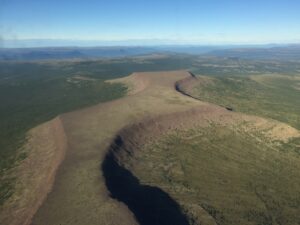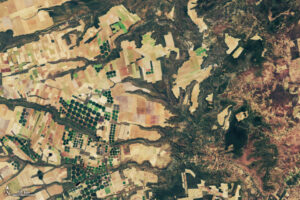35-year record of Earth observations is global scientific asset
Source: Cheryl Pellerin, America.gov, U.S. Department of State
- After 35 years and 2 million images of the planet’s surface – and two orbiting satellites with failing instruments and scant fuel reserves – the Landsat Earth observation program is getting a new satellite and a new, more stable, mission plan.
The Landsat satellites have produced data that scientists around the world use to monitor crops, assess water quality, map coral reefs, manage coastal zones and transportation systems, plan land use, manage emergencies and disasters, and carry out many other activities. (See related article.)
The newest satellite, scheduled to launch in 2011, is called the Landsat Data Continuity Mission. NASA is responsible for the space segment, which includes designing and building the satellite and the remote-sensing instrument, providing launch services, and testing the satellite once it is in orbit.
The U.S. Department of Interior’s U.S. Geological Survey (USGS) is responsible for the ground segment, which includes a network of ground receiving stations, a satellite operations facility and archive and image-processing facilities. After launch and testing, NASA will transfer satellite operations to USGS.
“NASA and USGS are working very hard,” said Ronald Beck, USGS program information specialist for the Land Remote Sensing Program, “to make sure there is data continuity.”
Remote Sensing
Remote sensing is defined as collecting information about an object without being in physical contact with the object. Satellites are common platforms for remote-sensing observations and have been used for that purpose since the early days of space flight.
Satellite sensors acquire images of the Earth and transmit the data to ground receiving stations worldwide. Once the raw images are processed and analyzed, they can document changing environmental conditions like pollution, global climate change, natural resource distribution, urban growth and more.
The first satellite, Sputnik I, was launched in 1957. For the next 15 years, the number of satellites grew, but most satellite imagery was classified – produced and viewed mainly by government organizations for military purposes.
In 1972, the first civil satellite was launched to collect data about the Earth’s surface and resources. The Earth Resources Technology Satellite, later renamed Landsat I, developed by NASA, made satellite imagery available to the public for the first time.
Satellite imagery has revolutionized the study of the natural environment and global hazards, agriculture, energy use, public health and international policymaking. The number of satellites has increased and there is a growing number of commercial satellites and imagery vendors.
Earth System Science
Some experts say the data derived from Landsat’s images were a major force that led to the development of the global-scale concept of earth systems science, which involves studying processes and cycles among the planet’s atmosphere and water, ice, land and life systems, over timescales ranging from minutes to eons.
The Earth-observation program has been experimental from the first Landsat 1 satellite, inspired by NASA’s Apollo missions to the moon and launched in 1972, to the still-orbiting Landsats 5 and 7 – meaning that each satellite was a project conceived individually with little consideration for the future.
That approach changed in 2005, when John Marburger, director of the White House Office of Science and Technology Policy, issued a memorandum on the issue.
“It remains the goal of the U.S. government,” he wrote, “to transition the Landsat program from a series of independently planned missions to a sustained operational program,” funded and managed by the government, an international consortium or a commercial partnership.
Filling the data gap
Landsat satellite’s orbit covers the entire globe every 16 days, but the satellite acquires images of only about one-third that area because of limited processing and storage capacity. It takes one satellite about three months to map the entire globe. With Landsat 5 and Landsat 7 now in orbit, together they cover the globe every eight days.
Landsat 5 launched in 1984 and, despite a design life of three years to five years, continues to operate 23 years later, albeit with limited capability. Landsat 7, with the same design life, launched in 1999; since 2003, a sensor problem has limited its capability. Both satellites will run out of fuel in 2010 or 2011, but remote-sensing experts hope the new satellite will be in orbit before that happens.
“We think we can keep them going until early 2011,” Beck said. “The realistic problem is, what if the sensors fail this year? We’ll have to find a short-term replacement, like buying the data from India, China, France, Japan, other satellite systems, or U.S. commercial firms.”
Today, in the United States, the Future of Operational Land Imaging Working Group is leading a multiagency effort to develop a long-term plan for Landsat.
Members of the working group include the White House Office of Science and Technology Policy, NASA, USGS, the National Oceanographic and Atmospheric Administration, and the departments of State, Energy, Agriculture, Transportation and Defense.
A report from the working group is due out in the next few months on how to handle the next generation of Landsat satellites and which agency should be in charge of land imaging for the U.S. government.
Additional information is available on the Future of Land Imaging Web site, sponsored by the Executive Office of the President.
(America.gov is produced by the International Information Programs Bureau, U.S. Department of State. Web site: http://www.america.gov)






